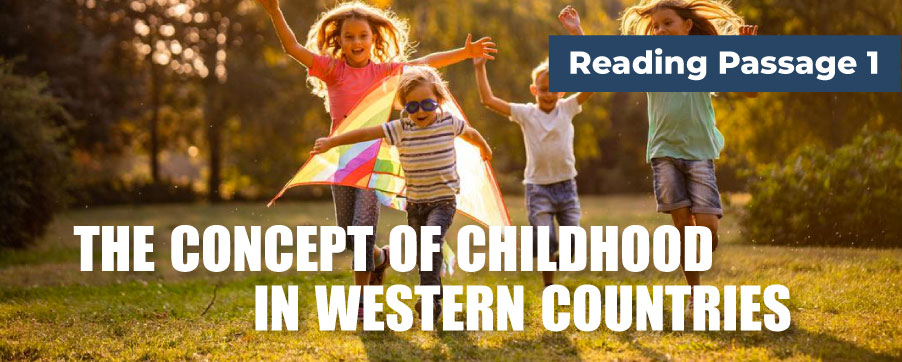
IELTS Recent Mock Tests Volume 6
- Published on: 15 Nov 2018
- Tests taken: 2,584,202
Answer Keys:
Part 1: Question 1 - 13
- 1 FALSE
- 2 FALSE
- 3 TRUE
- 4 NOT GIVEN
- 5 FALSE
- 6 NOT GIVEN
- 7 TRUE
- 8 history of childhood
- 9 miniature adults
- 10 industrialisation/industrialization
- 11 the Factory Act
- 12 play and education
- 13 (a) classroom
- 1 FALSE
- 2 FALSE
- 3 TRUE
- 4 NOT GIVEN
- 5 FALSE
- 6 NOT GIVEN
- 7 TRUE
- 8 history of childhood
- 9 miniature adults
- 10 industrialisation/industrialization
- 11 the Factory Act
- 12 play and education
- 13 (a) classroom
Part 2: Question 14 - 26
- 14 NOT GIVEN
- 15 TRUE
- 16 TRUE
- 17 TRUE
- 18 FALSE
- 19 NOT GIVEN
- 20 clues
- 21 relationship
- 22 message
- 23 reschedule
- 24 voicemail
- 25 cellphone
- 26 meeting
- 14 NOT GIVEN
- 15 TRUE
- 16 TRUE
- 17 TRUE
- 18 FALSE
- 19 NOT GIVEN
- 20 clues
- 21 relationship
- 22 message
- 23 reschedule
- 24 voicemail
- 25 cellphone
- 26 meeting
Part 3: Question 27 - 40
- 27 v
- 28 ii
- 29 vi
- 30 iii
- 31 vii
- 32 iv
- 33 viii
- 34 thunderstorms
- 35 Condensation
- 36 heat
- 37 eye
- 38 land
- 39 B
- 40 C
- 27 v
- 28 ii
- 29 vi
- 30 iii
- 31 vii
- 32 iv
- 33 viii
- 34 thunderstorms
- 35 Condensation
- 36 heat
- 37 eye
- 38 land
- 39 B
- 40 C
Leaderboard:
| # | User | คะแนน | เวลา | |
|---|---|---|---|---|
| DAHLIA TEDLOS |  | 9.0 | 15:04 | |
| uwu uwu |  | 9.0 | 15:04 | |
| son trinh |  | 9.0 | 15:11 | |
| 4 | ac |  | 9.0 | 15:18 |
| 5 | Yeti Grishma Archana |  | 9.0 | 15:20 |
| 6 | Samariddin Boltayev |  | 9.0 | 15:27 |
| 7 | Bipasna Mallick |  | 9.0 | 15:33 |
| 8 | Dilip Bastola |  | 9.0 | 15:36 |
| 9 | phuong Phuong |  | 9.0 | 15:45 |
| 10 | Shrouk Gaffar |  | 9.0 | 15:51 |
Review & Explanations:
Questions 1-7
Do the following statements agree with the information given in Reading Passage 1?
In boxes 1-7 on your answer sheet, write
| TRUE | if the statement agrees with the information |
| FALSE | if the statement contradicts the information |
| NOT GIVEN | If there is no information on this |
1 Aries pointed out that children did different types of work to adults during the Middle Ages.
2 Working children during the Middle Ages were generally unloved.
3 Some scientists thought that overwork might damage the health of young children.
4 The rise of trade unions majorly contributed to the protection of children from exploitation in the 19th century.
5 Through the aid of half-time schools, most children went to school in the mid-19th century.
6 In the 20th century, almost all children needed to go to school with a full-time schedule.
7 Nowadays, children’s needs are much differentiated and categorised based on how old they are.
- 1 Answer: FALSE
Keywords in Questions
Similar words in Passage
Q1: Aries pointed out that children did different types of work to adults during the Middle Ages.
Historian Philippe Aries asserted that children were regarded as miniature adults, with all the intellect and personality that this implies, in Western Europe during the Middle Ages (up to about the end of the 15th century).
Note:
According to the question, “Aries pointed out that children did different types of work like adults during the Middle Ages.”
From the passage, we can infer that “Aries asserted that children were regarded as miniature adults, with all the intellect and personality that this implies, in Western Europe during the Middle Ages” Which is a sentence do not support the writer’s ideal in the question.
The clue helps the reader to find the answer:
“children did different types of work like adults” appear in question and “children were as adults, with all the intellect and personality” appear in the question which are completely different meanings.
“Middle Ages” appears in both the question and the passage . However,The information in the two sections is contradictory.
Therefore, the answer should be false
- 2 Answer: FALSE
Keywords in Questions
Similar words in Passage
Q2: Working children during the Middle Ages were generally unloved.
Under this circumstance, children were considered to be useful. Back in the Middle Ages, children of 5 or 6 years old did necessary chores for their parents.
Note:
According to the question, “Working children during the Middle Ages were generally unloved”.
From the passage, we can infer that “Under this circumstance, children were considered to be useful. Back in the Middle Ages, children of 5 or 6 years old did necessary chores for their parents.” Which is a sentence do not support the writer’s ideal in the question.
The clue helps the reader to find the answer:
“children were generally unloved.” In the question and “children were considered to be useful” in the passage which are completely different meanings.
“Middle Ages” appears in both the question and the passage . However,The information in the two sections is contradictory.
Therefore, the answer should be false
- 3 Answer: TRUE
Keywords in Questions
Similar words in Passage
Q3: Some scientists thought that overwork might damage the health of young children.
The issue of whether long hours of labouring would interfere with children’s growing bodies began to perplex social reformers. Some of them started to realise the potential of systematic studies to monitor how far these early deprivations might be influencing children’s development.
Note:
According to the question “Some scientists thought that overwork might damage the health of young children”
From the passage we can know that “The issue of whether long hours of labouring would interfere with children’s growing bodies began to perplex social reformers.” Which is a sentence support the writer’s ideal in the question.
The clue helps the reader to find the answer:
“overwork might damage the health of young children” in the question has the same meaning with “long hours of labouring would interfere with children’s growing bodies” in the passage.
“overwork” in the question has the same meaning with “long hours of labouring” in the passage.
In this situation we can know that “health of young children” has the same meaning with “children’s growing bodies” in the passage.
Therefore, answer should be True.
- 4 Answer: NOT GIVEN
Keywords in Questions
Similar words in Passage
Q4: The rise of trade unions majorly contributed to the protection of children from exploitation in the 19th century.
Note:
From the question stated above, we can infer that “The rise of trade unions majorly contributed to the protection of children from exploitation in the 19th century.”
There is no information in the passage related to the writer’s ideal.
The answer here should be Not given
- 5 Answer: FALSE
Keywords in Questions
Similar words in Passage
Q5: Through the aid of half-time schools, most children went to school in the mid-19th century.
The influence of trade unions and economic changes also contributed to the evolution by leaving some forms of child labour redundant during the 19th century. Initiating children into work as ‘useful’ children was no longer a priority, and childhood was deemed to be a time for play and education for all children instead of a privileged minority.
Note:
From the question stated above, we can infer that “By the aid of half-time schools, most children went to school in the mid-19th century.”
From the passage we can know that the sentence “The influence of trade unions and economic changes also contributed to the evolution by leaving some forms of child labour redundant during the 19th century.” Which is a sentence support the writer’s ideal in the question.
The clue helps the reader to find the answer:
“most children went to school” in the question and “forms of child labour redundant” in the passage which are completely different meanings.
“19th century” appears in both the question and the passage . However,The information in the two sections is contradictory.
The answer here should be false - 6 Answer: NOT GIVEN
Keywords in Questions
Similar words in Passage
Q6: In the 20th century, almost all children needed to go to school with a full-time schedule.
Note:
From the question stated above, we can infer that “In the 20th century, almost all children needed to go to school with a full-time schedule”
There is no information in the passage related to the writer’s ideal.
The answer here should be Not given
- 7 Answer: TRUE
Keywords in Questions
Similar words in Passage
Q7: Nowadays, children’s needs are much differentiated and categorised based on how old they are.
Industrialisation, urbanisation and mass schooling pose new challenges for those who are responsible for protecting children’s welfare, as well as promoting their learning. An increasing number of children are being treated as a group with unique needs, and are organised into groups in the light of their age.
Note:
From the connections stated above, we can infer that “Nowadays, children’s needs are much differentiated and categorised based on how old they are.”
From the passage we can know that the sentence “Industrialisation, urbanisation and mass schooling pose new challenges for those who are responsible for protecting children’s welfare, as well as promoting their learning. An increasing number of children are being treated as a group with unique needs, and are organised into groups in the light of their age.” Which is sentence support for the question.
The clue helps the reader to find the answer:
In this situation “Nowadays” in the question has the same meaning with “Industrialisation, urbanisation” in the passage which is At the present time, in contrast with the past.
In this situation we can understand “categorised based on how old they are” in question near meaning with “organised into groups in the light of their age.” in passage.
“how old they are” in the question has the same meaning with “their age” in the passage which help the reader can find the answer.
Hence the answer is True
Questions 8-13
Answer the questions below.
Choose NO MORE THAN THREE WORDS from the passage for each answer:
Write your answers in boxes 8-13 on your answer sheet.
What had not become a hot topic until the French historian Philippe Aries’ book caused great attention?
8
According to Aries, what was the typical image of children in Western Europe during the Middle Ages?
9
What historical event generated the need for a large number of children to work for a long time in the 18th and 19th centuries?
10
What bill was enacted to protect children from exploitation in Britain in the 1800s?
11
Which activities were becoming regarded as preferable for almost all children in the 19th century?
12
In what place did children spend the majority of time during their day in school?
13
- 8 Answer: history of childhood
Keywords in Questions
Similar words in Passage
Q8: What had not become a hot topic until the French historian Philippe Aries’ book caused great attention?
The history of childhood has been a heated topic in social history since the highly influential book Centuries of Childhood’, written by French historian Philippe Aries, emerged in 1960.
Note:
From the question we can infer that “What has not become a hot topic until the French historian Philippe Aries’ book caused great attention?”
According to the passage, we can assume that “The history of childhood has been a heated topic in social history since the highly influential book Centuries of Childhood’, written by French historian Philippe Aries, emerged in 1960” which help us can find the answer from this sentence.
The clue helps the reader to find the answer:
“a hot topic until the French historian Philippe Aries’ book caused great attention” In the question has the same meaning with “The history of childhood has been a heated topic in social history since the highly influential book Centuries of Childhood” in the passage.
“a hot topic” in the question has the same meaning with “a heated topic” in the passage in the passage.
“French historian Philippe Aries” appear in both the question and the passage which help the reader can find the answer.
So the answer is history of childhood
- 9 Answer: miniature adults
Keywords in Questions
Similar words in Passage
Q9: According to Aries, what was the typical image of children in Western Europe during the Middle Ages?
Historian Philippe Aries asserted that children were regarded as miniature adults, with all the intellect and personality that this implies, in Western Europe during the Middle Ages (up to about the end of the 15th century).
Note:
According to the question, we can assume that “What image did Aries believe children are supposed to be like in Western Europe during the Middle Ages? ”
From the passage we can infer that “Historian Philippe Aries asserted that children were regarded as miniature adults with all the intellect and personality that this implies, in Western Europe during the Middle Ages (up to about the end of the 15th century).” ‘which support the writer’s ideal and help us can find the answer from this sentence.
Hence the answer is miniature adults
- 10 Answer: industrialisation/industrialization
Keywords in Questions
Similar words in Passage
Q10: What historical event generated the need for a large number of children to work for a long time in the 18th and 19th centuries?
In the 18th and 19th centuries, industrialisation created a new demand for child labour; thus many children were forced to work for a long time in mines, workshops and factories.
Note:
From the question we can assume that the writer asked “What historical event generated the need for a large number of children to work for a long time in the 18th and 19th centuries?”
From the passage we can infer that “In the 18th and 19th centuries, industrialization created a new demand for child labor; thus many children were forced to work for a long time in mines, workshops and factories.” Which support the writer’s ideal.
The clue helps the reader to find the answer:
“in the 18th and 19th centuries “ appear both in the question and the passage.
“a large number of children to work for a long time” in the question has the same meaning with “children were forced to work for a long time” in the passage.
The keyword in the question “What historical event” so the answer will be noun or noun phrase.
The keyword in this question will be a noun or noun phrase.
Hence the answer is industrialisation/industrialization
- 11 Answer: the Factory Act
Keywords in Questions
Similar words in Passage
Q11: What bill was enacted to protect children from exploitation in Britain in the 1800s
For example, in Britain, the Factory Act of 1833 signified the emergence of legal protection of children from exploitation and was also associated with the rise of schools for factory children.
Note:
From the connections stated above, “What bill was enacted to protect children from exploitation in Britain in the 1800s”
From the passage we can infer that “For example, in Britain, the Factory Act of 1833 signified the emergence of legal protection of children from exploitation and was also associated with the rise of schools for factory children.” which is the right information related with question. and support for the sentence in the question.
The clue helps the reader to find the answer:
“protection of children from exploitation” appear both in the question and the passage.
The keyword in this question will be a noun or noun phrase.
The answer here should be The Factory Act.
- 12 Answer: play and education
Keywords in Questions
Similar words in Passage
Q12: Which activities were becoming regarded as preferable to almost all children in the 19th century?
Initiating children into work as ‘useful’ children was no longer a priority, and childhood was deemed to be a time for play and education for all children instead of a privileged minority.
Note:
From the question we can infer that “What activities were more and more regarded as preferable to almost all children in the 19th century?”
According to the passage, the writer show for the reader know “Initiating children into work as ‘useful’ children was no longer a priority, and childhood was deemed to be a time for play and education for all children instead of a privileged minority.” which is sentence support some information in the question.
The clue helps the reader to find the answer:
“regarded” in the question has the same meaning with “deemed” in the passage which is Regard or consider in a specified way.
“all children” appear both in the question and the passage which help us can find the clues.
The keywords in this question “What activities” so the answer must be is a noun or noun phrase.
The answer here should be play and education
- 13 Answer: (a) classroom
Keywords in Questions
Similar words in Passage
Q13: In what place did children spend the majority of time during their day in school?
It is no longer a privilege for children to attend school and all children are expected to spend a significant part of their day in a classroom.
Note:
From the connections stated above, the writer shows the reader “In what place did children spend the majority of time during their day in school?”
According to the passage, “It is no longer a privilege for children to attend school and all children are expected to spend a significant part of their day in a classroom.” which is sentence support some information in the question.
The clue helps the reader to find the answer:
“the majority of time during their day in school” In the question has the same meaning with “spend a significant part of their day in a classroom.” in the passage.
The keyword in the question “In what place” so the answer must be is noun.
The answer here should be (a) classroom
READING PASSAGE 1
You should spend about 20 minutes on Questions 1-13, which are based on Reading Passage 1 below.

The Concept of Childhood in Western Countries
The history of childhood has been a heated topic in social history since the highly influential book Centuries of Childhood’, written by French historian Philippe Aries, emerged in 1960. He claimed that ‘childhood’ is a concept created by modern society.
Whether childhood is itself a recent invention has been one of the most intensely debated issues in the history of childhood. Historian Philippe Aries asserted that children were regarded as miniature adults, with all the intellect and personality that this implies, in Western Europe during the Middle Ages (up to about the end of the 15th century). After scrutinising medieval pictures and diaries, he concluded that there was no distinction between children and adults for they shared similar leisure activities and work; However, this does not mean children were neglected, forsaken or despised, he argued. The idea of childhood corresponds to awareness about the peculiar nature of childhood, which distinguishes the child from adult, even the young adult. Therefore, the concept of childhood is not to be confused with affection for children.
Traditionally, children played a functional role in contributing to the family income in the history. Under this circumstance, children were considered to be useful. Back in the Middle Ages, children of 5 or 6 years old did necessary chores for their parents. During the 16th century, children of 9 or 10 years old were often encouraged or even forced to leave their family to work as servants for wealthier families or apprentices for a trade.
In the 18th and 19th centuries, industrialisation created a new demand for child labour; thus many children were forced to work for a long time in mines, workshops and factories. The issue of whether long hours of labouring would interfere with children’s growing bodies began to perplex social reformers. Some of them started to realise the potential of systematic studies to monitor how far these early deprivations might be influencing children’s development.
The concerns of reformers gradually had some impact upon the working condition of children. For example, in Britain, the Factory Act of 1833 signified the emergence of legal protection of children from exploitation and was also associated with the rise of schools for factory children. Due partly to factory reform, the worst forms of child exploitation were eliminated gradually. The influence of trade unions and economic changes also contributed to the evolution by leaving some forms of child labour redundant during the 19th century. Initiating children into work as ‘useful’ children was no longer a priority, and childhood was deemed to be a time for play and education for all children instead of a privileged minority. Childhood was increasingly understood as a more extended phase of dependency, development and learning with the delay of the age for starting full-time work- Even so, work continued to play a significant, if less essential, role in children’s lives in the later 19th and 20th centuries. Finally, the ‘useful child’ has become a controversial concept during the first decade of the 21st century, especially in the context of global concern about large numbers of children engaged in child labour.
The half-time schools established upon the Factory Act of 1833 allowed children to work and attend school. However, a significant proportion of children never attended school in the 1840s, and even if they did, they dropped out by the age of 10 or 11. By the end of the 19th century in Britain, the situation changed dramatically, and schools became the core to the concept of a ‘normal’ childhood.
It is no longer a privilege for children to attend school and all children are expected to spend a significant part of their day in a classroom. Once in school, children’s lives could be separated from domestic life and the adult world of work. In this way, school turns into an institution dedicated to shaping the minds, behaviour and morals of the young. Besides, education dominated the management of children’s waking hours through the hours spent in the classroom, homework (the growth of ‘after school’ activities), and the importance attached to parental involvement.
Industrialisation, urbanisation and mass schooling pose new challenges for those who are responsible for protecting children’s welfare, as well as promoting their learning. An increasing number of children are being treated as a group with unique needs, and are organised into groups in the light of their age. For instance, teachers need to know some information about what to expect of children in their classrooms, what kinds of instruction are appropriate for different age groups, and what is the best way to assess children’s progress. Also, they want tools enabling them to sort and select children according to their abilities and potential.
IELTS Explained for Recent Mock Tests Volume 6 - Reading Test 1
Deepen your understanding of the given information in the passage and sharpen your reading skills with detailed explanation from our IELTS expert. In these comprehensive videos, Jamie will help you locate keywords, find synonyms and scan for information to tackle some of the most common question types.
Want to watch the rest of the class?
Purchase an All-Access Pass to get access to this premium class and 200+ more on IOT. Or start with This Single Class today






